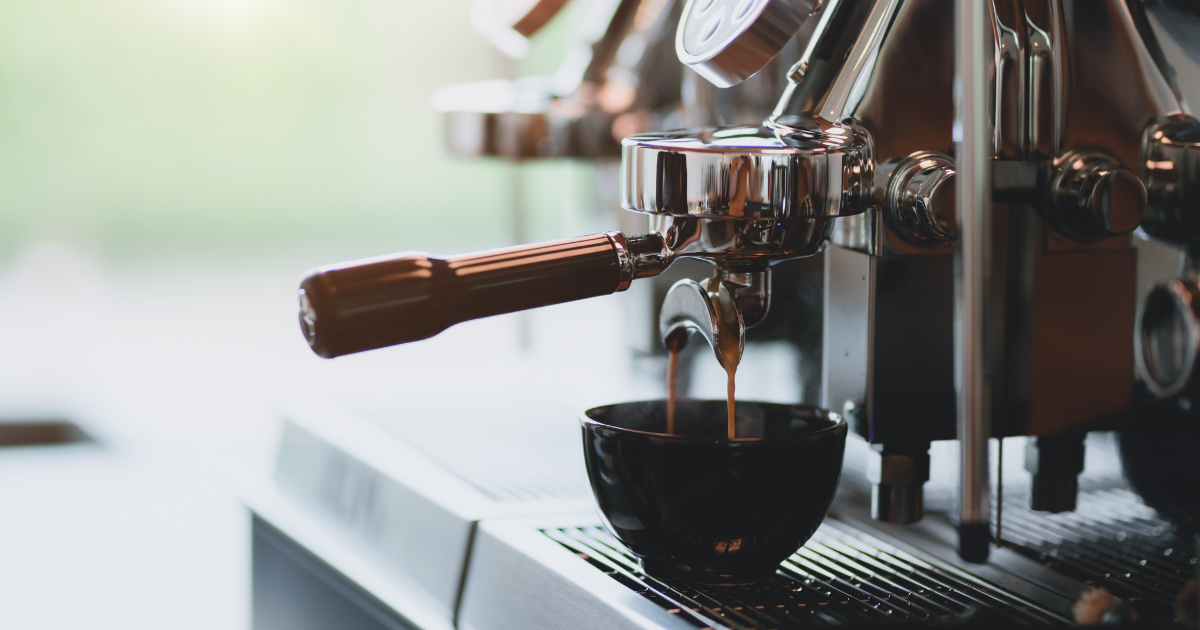You’ve probably noticed that coffee beans come in a spectrum of colors, from light golden-brown to deep, dark brown. This visual transformation is the result of coffee roasting, a fascinating and complex process that unlocks the hundreds of aromatic and flavor compounds hidden within the raw, green coffee bean. Roasting is where the magic truly happens; it’s the pivotal stage that transforms a relatively flavorless seed into the fragrant, rich, and delicious coffee we know and love. Without proper roasting, even the highest quality green beans will fail to deliver their full potential.
Have you ever wondered why a light roast tastes so different from a dark roast, even if they started as the same bean? Or how roasters manage to consistently bring out specific notes like chocolate, citrus, or floral aromas? This comprehensive guide will take a deep dive into the art and science of coffee roasting, exploring the intricate chemical reactions, the different roast levels, and the critical role the roaster plays in shaping your cup. We’ll demystify terms like “first crack” and “development time,” and help you understand how this vital step impacts everything from acidity and body to sweetness and bitterness. Get ready to pull back the curtain on the roasting process and gain a profound appreciation for the skill and precision required to take coffee from a simple green bean to a perfect brew.
What Happens During Roasting: The Chemical Transformation
At its core, coffee roasting is a precise application of heat that drives a series of complex chemical reactions within the coffee bean. This process is far more intricate than simply “cooking” the beans; it’s a delicate dance between time and temperature that develops flavor, alters structure, and transforms the raw bean into a state ready for brewing. Understanding these fundamental changes helps appreciate the roaster’s craft.
Drying Phase (Endothermic)
- Initial Stage: When green coffee beans are first introduced into a hot roaster, the very first phase is drying. Green beans contain about 8-12% moisture.
- Heat Absorption: This is an endothermic process, meaning the beans absorb heat energy without a significant rise in their internal temperature. The heat is used to evaporate the water.
- Visual Cues: The beans’ color might change from green to a pale yellow, and a grassy or hay-like aroma might be noticeable as steam escapes.
- Importance: This phase is crucial for uniform roasting. If the beans aren’t dried evenly, subsequent reactions will be inconsistent, leading to unevenly roasted coffee with undesirable flavors. This stage can take 4-8 minutes, depending on the bean and roaster.
Maillard Reaction & Browning (Exothermic)
- Key Flavor Development: Once the beans are largely dried (around 300-320°F / 150-160°C), the Maillard Reaction begins. This is the same chemical reaction responsible for the browning of bread, searing meat, and developing complex flavors in many cooked foods.
- Sugar-Amino Acid Interaction: Sugars and amino acids within the coffee bean react to create hundreds of new aroma and flavor compounds. This is where most of the desirable flavors (caramel, chocolate, toasted nuts, bread-like notes) start to develop.
- Exothermic Phase: The Maillard Reaction is largely an exothermic process, meaning the beans start to generate their own heat. The roaster often reduces external heat input during this stage to manage the bean’s internal temperature.
- Color Change: The beans rapidly transition from yellow to various shades of brown.
- Aroma Cues: A more distinct “toasty” or “bread-like” aroma fills the air. This stage is critical for balancing sweetness and complexity.
Caramelization and First Crack (Exothermic Peak)
- Sugar Breakdown: As temperatures continue to rise (around 380-400°F / 193-204°C), the caramelization of sugars within the bean intensifies. This contributes to sweetness, bitterness, and the characteristic brown color of roasted coffee.
- First Crack: This is the most significant audible cue in roasting, sounding like popcorn popping. It occurs when the pressure of water vapor and gasses inside the bean builds up and causes the cellulose structure to fracture.
- Exothermic Peak: The period immediately after first crack is often the most intensely exothermic. The beans release a lot of heat, and the roaster must be very careful to manage temperature to avoid scorching or rushing the roast.
- Flavor Development: After first crack, the original “origin” characteristics (like fruitiness or floral notes) are further developed, and the internal bean structure becomes more porous. This is the beginning of what’s often considered the “development phase,” where the roaster refines the flavor profile.
- Chaff Release: The papery skin of the bean (chaff) also starts to detach and is typically collected by a cyclone or exhaust system.
Development Time and Second Crack (Endothermic Again)
- Development Time: The period after first crack is crucial. The roaster controls the rate of temperature increase to ensure adequate development time, allowing flavors to fully mature without becoming baked or burnt. This is where the roaster’s skill truly shines.
- Second Crack: If the roast continues to higher temperatures (around 420-440°F / 215-225°C), second crack occurs. This sounds softer and more like a crackling or snap, as the cellular structure further breaks down and oils migrate to the surface of the bean.
- Endothermic Again: As the bean’s structure breaks down, it becomes more endothermic again, absorbing heat more readily.
- Flavor Shift: Beyond second crack, origin characteristics diminish, and roasty, smoky, or bitter notes become dominant. Oils begin to visibly appear on the bean’s surface.
Understanding Roast Levels: A Spectrum of Flavor
The term “roast level” refers to how long and at what temperature coffee beans are roasted. This single factor has a profound impact on the final flavor, aroma, acidity, and body of your coffee. Rather than just light, medium, or dark, thinking of roast levels as a continuous spectrum helps in understanding the vast range of flavors a roaster can achieve, moving from bright and vibrant to bold and bittersweet.
Light Roasts
- Characteristics: Light brown, no oil on the surface, often mottled. Beans are denser. Roasted just past first crack.
- Flavor Profile:
- Acidity: Highlight bright acidity, often citrusy, fruity, or wine-like.
- Body: Generally lighter body.
- Origin Characteristics: Emphasize the unique, inherent flavors of the coffee’s origin (e.g., Ethiopian floral notes, Kenyan berry notes).
- Sweetness: Can be quite sweet, showcasing intrinsic sugars.
- Examples: Cinnamon Roast (very light, rare), Light City Roast.
- Ideal For: Brewing methods that highlight clarity and bright flavors, such as pour-over, Chemex, or Aeropress. Often preferred by specialty coffee enthusiasts for single-origin coffees.
Medium Roasts
- Characteristics: Medium brown, little to no oil on the surface. Roasted before or just as second crack begins.
- Flavor Profile:
- Balance: Aims for a balanced cup, combining origin characteristics with roasted notes.
- Acidity: Milder acidity than light roasts.
- Body: Medium body.
- Sweetness: Good balance of sweetness and roasted notes.
- Development: Caramel, chocolate, and nutty notes are more prominent.
- Examples: City Roast, Full City Roast.
- Ideal For: Versatile across most brewing methods, including drip coffee makers, espresso, and French press. Often the preferred roast level for well-rounded daily drinkers.
Dark Roasts
- Characteristics: Dark brown, often shiny with oils on the surface (from cellular breakdown). Roasted well into or past second crack.
- Flavor Profile:
- Bitterness: Dominant bitter notes, often smoky, roasty, or charcoal-like.
- Acidity: Very low acidity.
- Body: Heavier, fuller body.
- Origin Characteristics: Most of the original bean flavors are masked by roast notes.
- Sweetness: Can be very sweet, but often overshadowed by bitterness.
- Examples: Vienna Roast, French Roast, Italian Roast.
- Ideal For: Espresso (especially traditional Italian style), French press, or anyone who prefers a bold, strong, less acidic cup. These roasts are more forgiving of less precise brewing.
The Roaster’s Craft: Art, Science, and Sensory Skill
While the chemical reactions are scientific, the execution of coffee roasting is undeniably an art. A master roaster isn’t just following a formula; they’re constantly monitoring, adjusting, and making split-second decisions based on their experience, intuition, and sensory input. This blend of technical knowledge and creative flair is what separates a good roast from a truly exceptional one, bringing out the unique characteristics of each green coffee bean.
Profile Roasting and Consistency
- Roast Profile: A roast profile is a detailed plan or “recipe” for roasting a specific batch of coffee, outlining temperature changes over time, airflow adjustments, and roast duration. It’s designed to bring out the best flavors in a particular bean.
- Batch Consistency: A skilled roaster aims for consistency from batch to batch. This involves meticulous control over variables like batch size, ambient temperature, humidity, and the beans’ starting moisture content.
- Data-Driven Decisions: Modern roasters use sophisticated software to record and analyze roast profiles, allowing them to replicate successful roasts and troubleshoot issues. This data-driven approach enhances the scientific aspect of roasting. Achieving consistent, high-quality roasts requires a deep understanding of thermodynamics and the specific characteristics of each coffee origin.
Sensory Evaluation and Quality Control
The roaster’s palate is their most important tool.
- Cupping: After roasting, coffee samples undergo cupping, a standardized sensory evaluation process. Roasters meticulously taste each batch, assessing aroma, flavor, acidity, body, and balance to ensure the roast profile achieved the desired outcome.
- Troubleshooting: If a batch doesn’t meet expectations, the roaster uses their sensory feedback and roast data to adjust the profile for future batches. For example, too much bitterness might mean a faster roast or less development time.
- Artistic Interpretation: The roaster acts as an interpreter, translating the potential of the green bean into a specific flavor experience. They decide if they want to highlight acidity, sweetness, or body, guiding the roast to achieve that vision. This continuous feedback loop of roasting, tasting, and adjusting is central to the roaster’s craft.
Roasting at Home: A Growing Trend
For the truly dedicated coffee enthusiast, home coffee roasting offers ultimate control and a deeper understanding of the process.
- Equipment: From simple popcorn poppers (for beginners) to dedicated small-batch drum roasters, various equipment options are available for home use.
- Learning Curve: It’s a challenging but rewarding endeavor, requiring patience, careful observation, and a willingness to experiment. There’s a steep learning curve to achieving consistent, great results.
- Benefits: Roasting at home allows you to enjoy the freshest possible coffee, experiment with different roast levels for the same bean, and fully customize your coffee experience. It also provides a unique appreciation for the complexities involved in bringing coffee to life.
Coffee roasting is undeniably both an art and a science, a critical transformation that dictates the final character of your beloved brew. It’s where raw, green coffee beans undergo complex chemical reactions—from drying and the Maillard Reaction to caramelization and the audible “cracks”—to unlock a vast spectrum of flavors and aromas. The final roast level, whether light, medium, or dark, profoundly impacts everything from a coffee’s vibrant acidity to its rich, smoky bitterness.
Behind every delicious cup is a skilled coffee roaster, meticulously crafting roast profiles, utilizing technology, and relying on their honed sensory skills to ensure consistency and quality. Understanding this intricate process not only deepens your appreciation for the beverage but also empowers you to choose coffees that align with your preferred flavor profiles. So, the next time you savor your coffee, remember the complex journey from a humble green bean to that perfect, aromatic brew, a testament to the remarkable art and science of coffee roasting.

